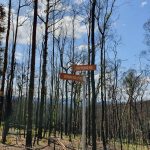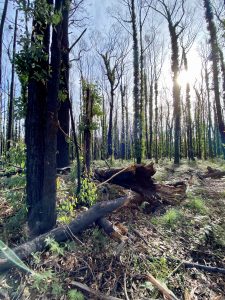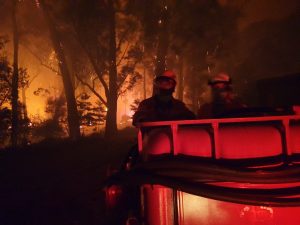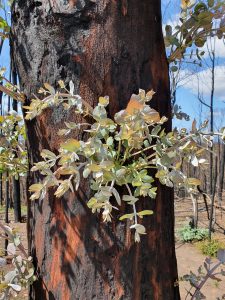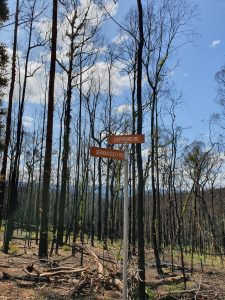Australia and Fire
Aridity, sclerophylly and fire
One of the most striking characteristics of many of plants which have evolved in Australia is an adaptation to aridity. Sclerophylly (= hard leaves) is the term used to describe leaves that are tough and rigid and usually have a very thick cuticle.
Many sclerophylls also have adaptations to reduce water loss. Sclerophylly is mainly found in the Epacridaceae (heaths), the Proteaceae (banksias) and the Myrtaceae (eucalypts). Other sclerophyllous species include almost all grasstrees (Xanthorrhoea, family Xanthorrhoeaceae), as well as some sedges (Cyperaceae), including the kangaroo paws and relatives.
Sclerophyllous plants are able to survive in relatively dry conditions. Many of their characteristic features also promote fire resistance. Many native Australian plants are well adapted to particular fire regimes, and some require fire to reproduce. Some Banksia species, for example, require relatively frequent fires to regenerate. Several other plants, including grasstrees (Xanthorrhoea) and some species of orchids only flower after fire.
History
The Australian continent separated from Antarctica around 30 million years ago. This was a critical time in the history of life on Earth. The mammals were expanding and diversifying, flowering plants were becoming dominant and the changing positions of the continents also caused changes in climate.
Australia’s separation from Antarctica allowed the formation of the circum-Antarctic current, and led to the development of a drier climate for the northward-drifting continent. Australia’s flora evolved in a warming, drying climate; and many became adapted to aridity.
The presence of charcoal in sediment samples indicates that fire has been an important part of the Australian landscape for millions of years. Increasing aridity led to the development of more frequent fires, and much of the Australian flora is now fire tolerant and even fire adapted. During the early part of the continent’s history, the Gondwanan rainforest gave way to more open woodlands and fire promoting plants such as the eucalypts evolved. These plants came to rely on fire as a means of excluding their competitors and they adapted traits, which helped them to tolerate and promote fire.
Back to the ecology theme overview
